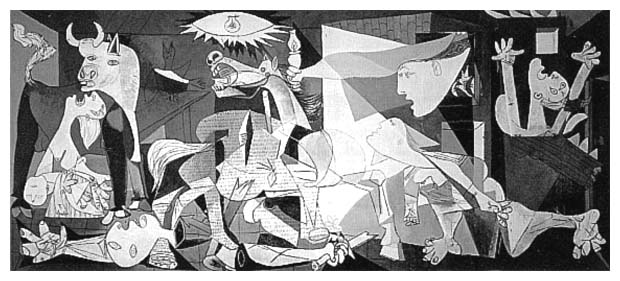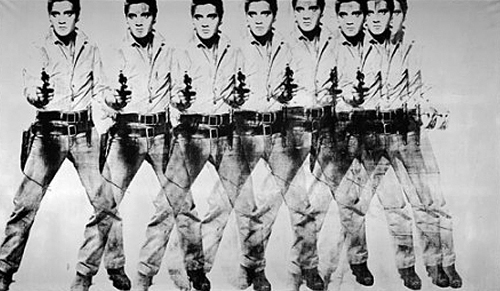
Valued Ambiguities

Van Gogh ended his career dead as a failed artist with a couple thousand paintings
and only two sells during his lifetime. He was a starved artist dispassionate
by his lack of success, but is now modernly considered one of the greatest
Impressionist artists of the day, his works selling for millions of dollars
by eager buyers.
Why is it that Van Gogh, like so many artists, arose to fame only after their
death? How can a painting that used to be completely worthless in the eyes
of buyers suddenly become the epitome of artistic ability valued at millions?
It
is an interesting thought that scratches at the question, how does a work of
art acquire value? Value being monetary wealth, emotional or personal significance,
or historic relevance in a society. The value of art can be measured using
different schools of appreciation: aesthetics, institution, and intention.
Using these
schools as a foundation, the contemporary standards of society of art selling
for exuberant amounts of money will be analyzed and built upon.
In modern society some works art have been so absurdly high valued that only
the extremely wealthy sectors of the population can even dream of affording
it, while other works have been left behind in thrift stores and dumpsters
in the
rain. What differentiates the good high valued art from the castaways? There
have been many different art theories set by several philosophers trying to
answer this question of what is art? and how the value of good art is to be
determined.
Three main schools of thought seem to be more used than others in today’s
modern society. The most basic of which is pure aesthetic value or infectiousness
of the artwork. Tolstoy envisioned this style of artistic appreciation. He
earnestly believed in the notion of infectiousness in which an artist uses
his emotions
to create a work of art and infect his audience with their feelings. Through
this infectiousness the artwork would be more highly valued for the feeling
portrayed to the audience than a piece of art that clung lifelessly to the
wall. The philosopher
Kant also believed in a similar notion of disinterestedness, pure aesthetic
value where the viewer has a feeling of disconnect from the world only focusing
on
the aesthetic appeal of the work. These themes of aesthetic appreciation can
be visualized in the artistry of Jackson Pollock whose paintings are now valued
at millions of dollars such as Autumn Rhythm (Number 30), 1950,
Enamel on canvas. The extreme value of these works is based extensively on
aesthetic appeal of the ensnaring continuous motion and emotion captured in
each of his
paintings. Aside from appeal of art based on pure physical superficial beauty
and skill, art can similarly be valued based on deeper authentic inner intent
of the work.
As suggested by Danto, art is the communication of a message between the artist
and the viewer. He believes that anything can be art as long as it holds significance
or intention behind it. Art, in his opinion, becomes a matter of philosophy
where the artist wants to convey a sense of life, how we feel, or cultural
significance
in society. Nothing is art without interpretation that constitutes it as such,
and in modern society there appears to be a new dimension to art that requires
discussion of intent behind each work. Without this intention of trying to
convey a message or a feeling to a certain audience, the art is invalid and
without
much value. Plato toys with the idea that artists and the art they create cannot
be trusted due to his theory that all art is a mere imitation of the real truth.
The essence of Plato’s thought can be viewed as originality where to have
a unique message that is being conveyed, there must be an air of creativity that
makes the artwork unique and not a mere imitation of another. With imitation
it is difficult to convey a message to an audience that is uniquely your own
and therefore the message is lacking in intent. The feeling conveyed by Danto
and Plato can be embodied in artists like Picasso and Diego Rivera who often
conveyed messages of solidarity, historical imaginary, and political outrage
and rebellion within their paintings and murals. These works are often very highly
valued both in monetary value and emotional significance in society. Beyond physical
and internal content within works of art that create immense fame and value of
various artists’ and paintings, value is also overwhelmingly determined
by the institution of the artworld.
The artworld institution proposed by Dickie consists of artists, experts, and
the artworld public viewers. In the artworld the monetary value of art is
largely defined by connoisseurship. A general consensus by experts in the
art field determines the wealth of the art, or deems it generally invaluable
in a largely a Hume manner where education is needed to determine good art.
A large part of this value in an artwork stems from namesake of the artist.
If the work of art is a Picasso, even a hastily done sketch, the work can
sell for substantial monetary value if proven. Many pieces of art have been
deemed masterpieces by the artworld solely on the artist who painted them
and sold for many millions of dollars. Namesake can be valuable because certain
artists define an age, like Warhol with modern Pop Art, Van Gogh with Impressionism,
and Velazquez representing the Spanish Age.
Value in works of art whether monetary or personal can be determined by many
combinations of factors including aesthetic value, artist intention, and institutional
influence. In modern day the works deemed to possess value sell for grand sums
of money to eager buyers, while others are left to the dust and forgotten.

Autumn Rhythm (Number 30), 1950, Jackson Pollock, Enamel on canvas <http://www.metmuseum.org/toah/works-of-art/57.92>

PICASSO, Pablo Guernica Paris, 1 May to 4 June 1937 ?Oil on canvas <http://abstractart.20m.com/Pablo_Picasso.html>

ANDY WARHOL Eight Elvises, 1963, sold $100 million <http://www.theartwolf.com/10_expensive.htm>